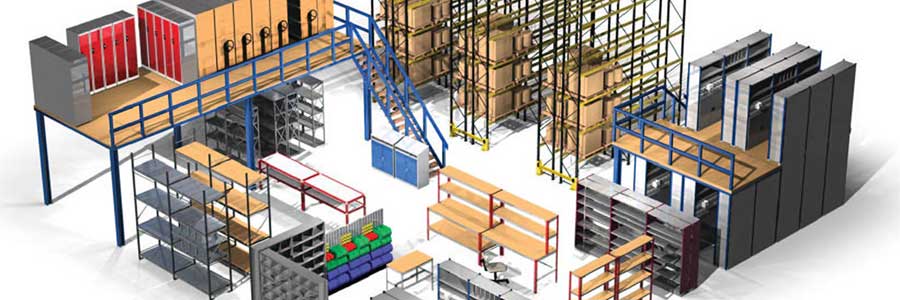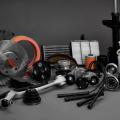Two factors dominate warehouse and storage planning; safety and efficiency. It is the job of whoever is responsible for the site to store pallets and materials are safely as possible whilst getting the best possible value for money. This guide is intended to give advice to anyone setting up, designing or re-designing a warehouse or storage facility on how to do just that.
The Building
If possible, it is important to be involved with the warehouse or storage facility design right from the outset. Remember it is usually far cheaper to build up than out on a pound per cubic metre basis and, on a similar note, it is important to think about the warehouse volume rather than its floor space.
Entrances and doors should be installed with the type of machines that are to be used in the warehouse in mind. Are forklifts going to be the only vehicles to enter the warehouse or should there be loading docks or room for larger vehicles such as telehandlers?

The Flow of Traffic
The flow of vehicles through the warehouse is the first thing to consider before you begin installing pallet racks and hardware. Often, a one way system is the most efficient design as it reduces the need to congestion inducing U-turns. Apply these considerations to the entire site in order to ensure smooth flow of materials, staff and visitors from arrival to departure.
Moreover, aim to minimise the distance material travels before it arrives at its storage location. This can be done by located loading and de-loading bays close to storage racks and ensuring the shortest paths are made available to delivery vehicles.
Keep pedestrians and moving vehicles separate wherever possible. This involves locating designating clear pedestrian only zones and locating customer car parks away from loading bays
If the warehouse is already established, collect data on the movement of materials and people through the site. Map out the major flow routes and identify congestion areas. Eradicate these bottle necks by re-designing the flow of traffic and materials.
Onsite Vehicles
The types of vehicles permitted onsite is another thing to consider. If large transport vehicles such as lorries, or heavy material handling equipment such as telehandlers are present then extra care must be taken to separate them from pedestrians.
Will you invest in a fleet of material handlers or lease them? Forklift and telehandler hire is often cheaper than investing in your own fleet and can reduce the requirement of storing machines for long periods when not in use.
Investing in the right handling equipment for the job is essential in maintaining an efficient and well-ordered warehouse. The cost of handling equipment is a small percentage of the overall cost of warehousing and storage; don’t under-invest.
Utilise Space Wisely
Ensuring efficient space utilisation is no easy task, so use tools like Pareto analysis to locate materials and products in locations depending on their storage, handling and throughout characteristics. The pallet and storage racks should be selected to maximise space utilisation and allow you to stack pallets and materials as high as possible.
Budget, Planning and Documentation
Planning and documentation is imperative from an early stage. Ensure you detail and implement everything from operating heights to rack dimensions in order to maximise efficiency and keep costs down.
The heating, lighting and fire protection solutions must also be accounted for in your budget alongside staffing costs and other miscellaneous items. Failing to budget, plan and document can quickly lead to costs spiralling as waste and redundancies creep in.
Moreover, plan for the future when designing the warehouse, allowing for growth, increase in demand and upgrades and new installations.
Control and Improve
As your company evolves and the demands on the warehouse change, implement processes that allow you to control and improve safety and efficiencies. Continuous process improvement methodologies such as Kaizen allow you to stay on top of the warehouse operations and ensure they remain efficient.
Enlist the help of the sites operators and request regular feedback from the warehouse floor to identify inefficiencies and bottlenecks are they appear. Implement smaller, functional changes on a regular basis to gradually improve efficiencies and let staff know they are valued and appreciated.
































No Comments
Leave a comment Cancel